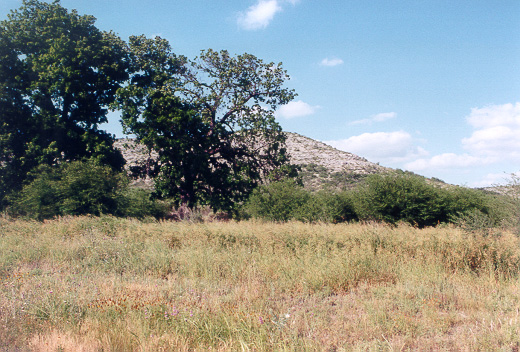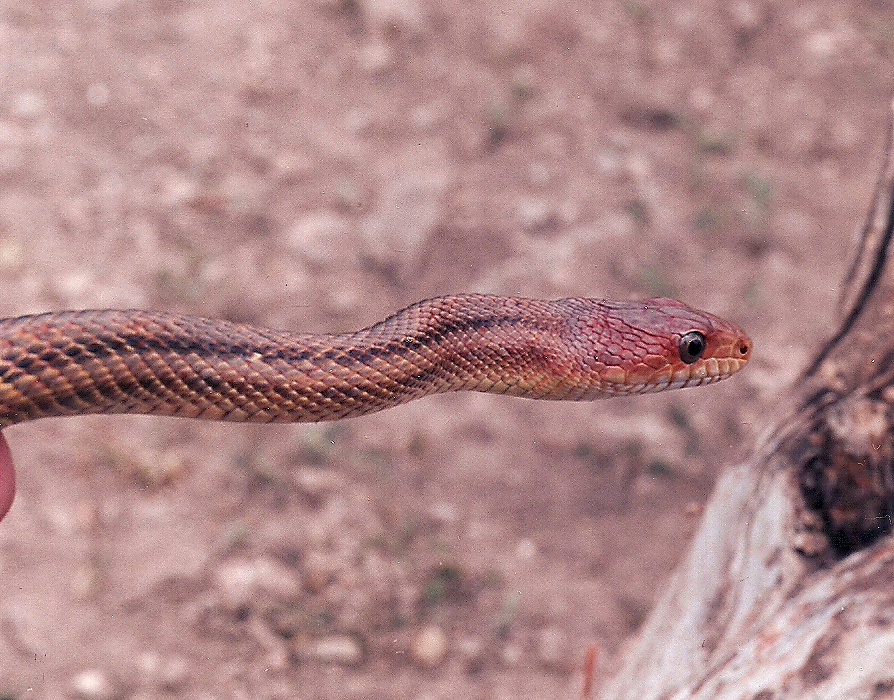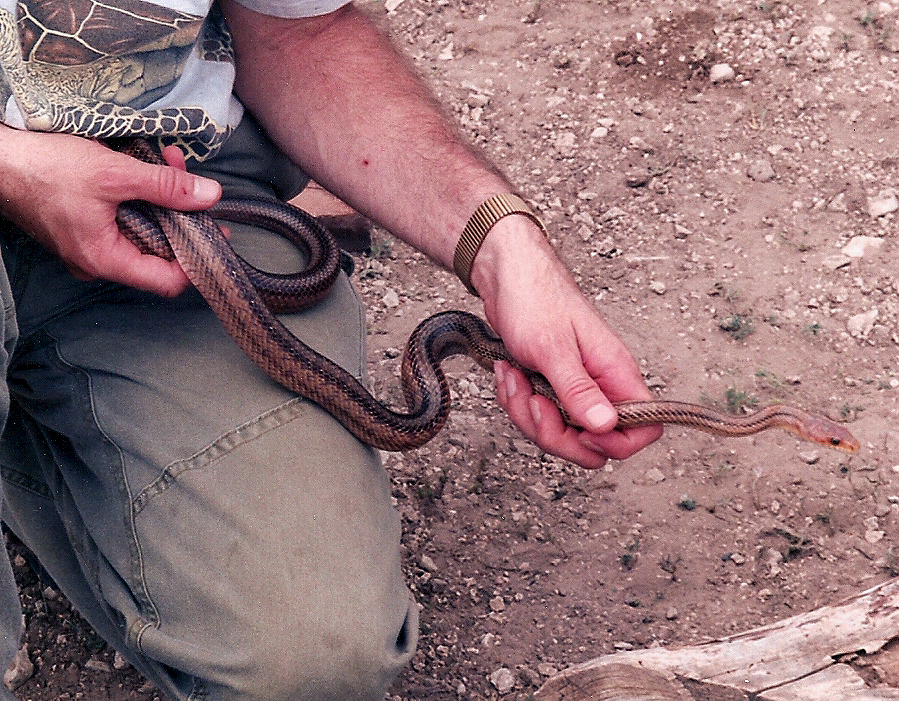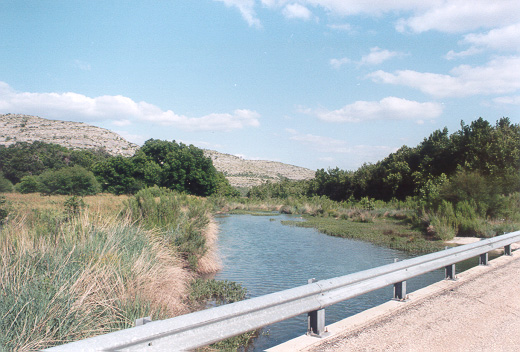Juno Road (continued)
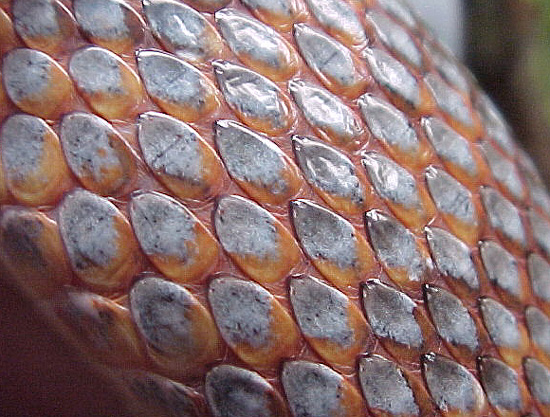
bairdii scales up close
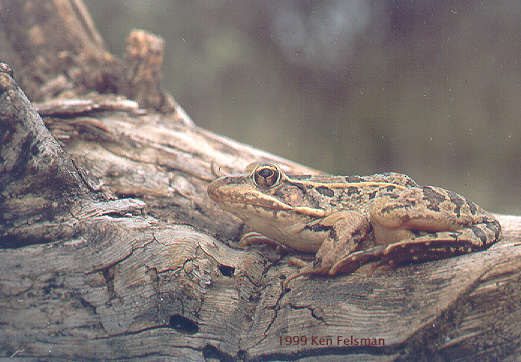
A hopping brown blob by the light of day. Photo by Ken
Felsman.
Baird's Rat Snake is a creature of stunning, subtle beauty. The outer edge of each scale is a bluish grey, and the interior portion of each scale is yellow on the front half of the snake, changing to a dark orange on the rear half. A series of three dark stripes ran down the dorsum, stopping a foot or more away from the head. Pantherophis bairdi is named after the naturalist Spencer Fullerton Baird. This rat snake is found in wooded, rocky areas where it feeds on rodents and birds. It seldom exceeds four feet in length.
Tennant, in his Field Guide to Texas Snakes, indicated that bairdi is rare west of the Edwards Plateau, so I had no expectations of seeing one here in the eastern Big Bend. Looking at the nearby wooded riparian corridors along the Devil's River, however, I realized that it was probably pretty good habitat for Baird's. We bagged the snake for further photography the following day, and continued on, excited at the prospect of further discoveries.
Just south of Baker's Crossing, we halted so Rick and I could work a roadside rock cut on foot, while Ken and Steve continued to drive the road. After dropping us off, Ken drove about twenty feet and came to a screeching halt - there was a snake crawling across the road, a Baird's Rat Snake! A forty inch male, it had been crossing the road under the glare of our headlights while we were engaged in splitting up. Two Baird's in less than twenty minutes! We were getting excited now, the night stretching in front of us seemed full of promise.
As the taillights of the Blazer receded into the dark, Rick and I set about working the rock cut. We walked slowly along the roadside, playing our flashlights over the exposed rock from top to bottom, occasionally checking the ground around our feet. We would settle for any herp, but our greater goal was to find a Gray-Banded King Snake (Lampropeltis alterna). These kingsnakes are nocturnal creatures, and can sometimes be found at night, crawling on rock cuts and cliff faces, as they forage for sleeping lizards. Graybands are not an uncommon snake, but because of their nocturnal habits they are uncommonly found.
It was a wonderful night to be out under the stars. The moon had not yet risen, but we had plenty of starlight, and the wispy curtain of the Milky Way stretched across the heavens above. Down here on the planet, fireflies were winking on and off by the thousands, their glowing hind parts a bit greener than the ones back home in Illinois, just enough to be noticeable. We could hear the Devil's River gurgling in the dark far down the slope from us, and the occasional croak of several Rio Grande Leopard Frogs. Disappointed in our search for alterna, we found only a few Jumping Spiders, located by the emerald reflections of their compound eyes. We switched off our flashlights as we waited to be picked up; I lit a pipe, and as we enjoyed the quiet sounds of the darkness Rick and I agreed there was no place we would rather be.
